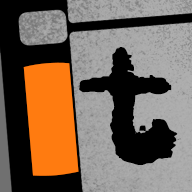...if you suck at syncing audio, or just don't feel like doing the work.
EDIT: ...or, if you have a multi-camera, multi-audio source shoot (see Paul's post below).
If you find syncing audio difficult, I think you just haven't learned the proper method. I actually get the job done faster, on my own, than with Pluraleyes, so I'll be un-installing the free trial.
But hey, the trial is free, and fully-functional. Can't beat that.
EDIT: ...or, if you have a multi-camera, multi-audio source shoot (see Paul's post below).
If you find syncing audio difficult, I think you just haven't learned the proper method. I actually get the job done faster, on my own, than with Pluraleyes, so I'll be un-installing the free trial.
But hey, the trial is free, and fully-functional. Can't beat that.
Last edited:




 I'm just joking, I understand now. You un-install that bitch. You un-install it good.
I'm just joking, I understand now. You un-install that bitch. You un-install it good.